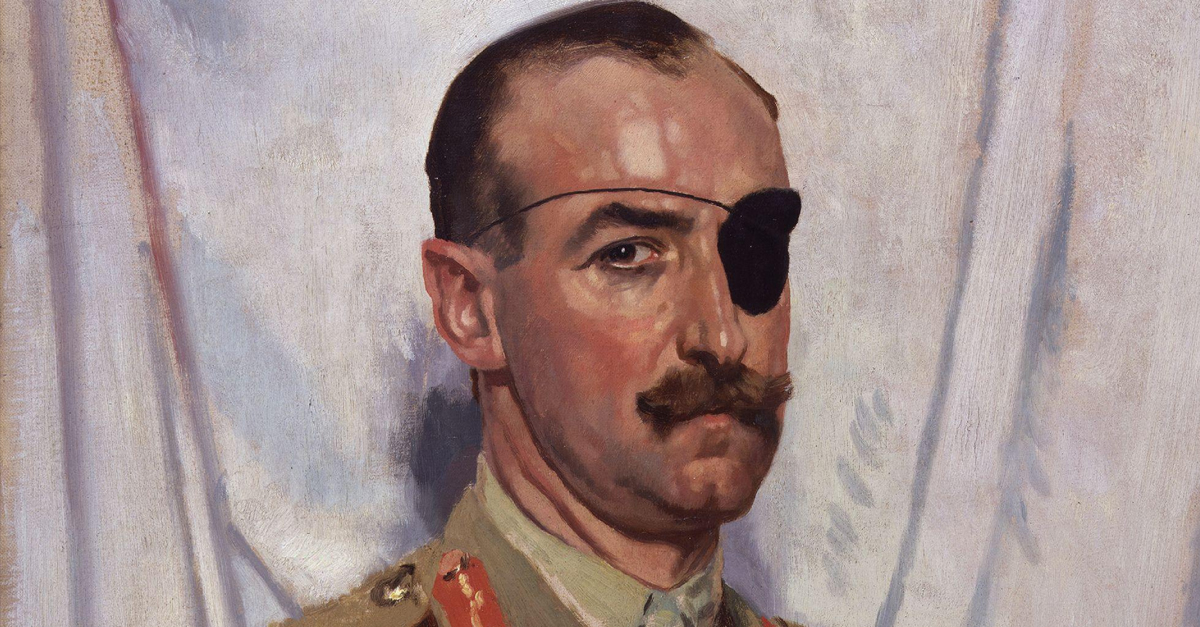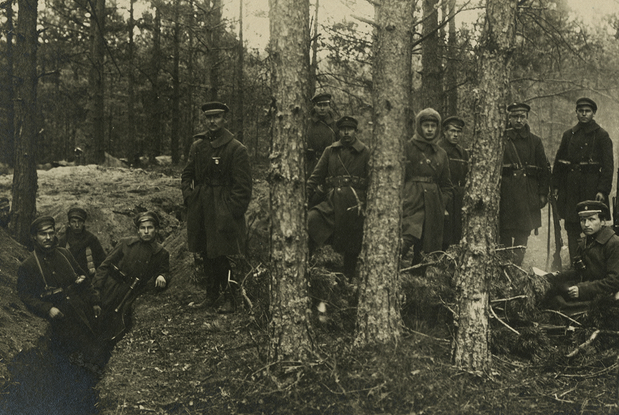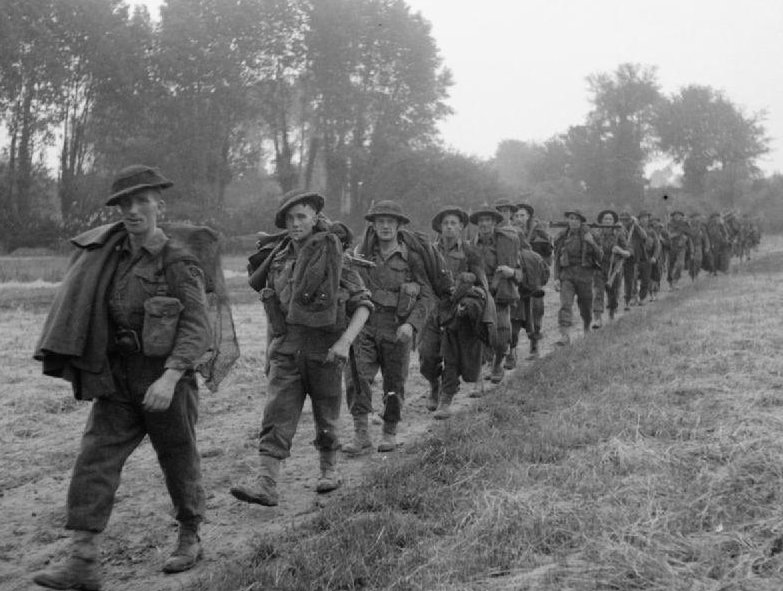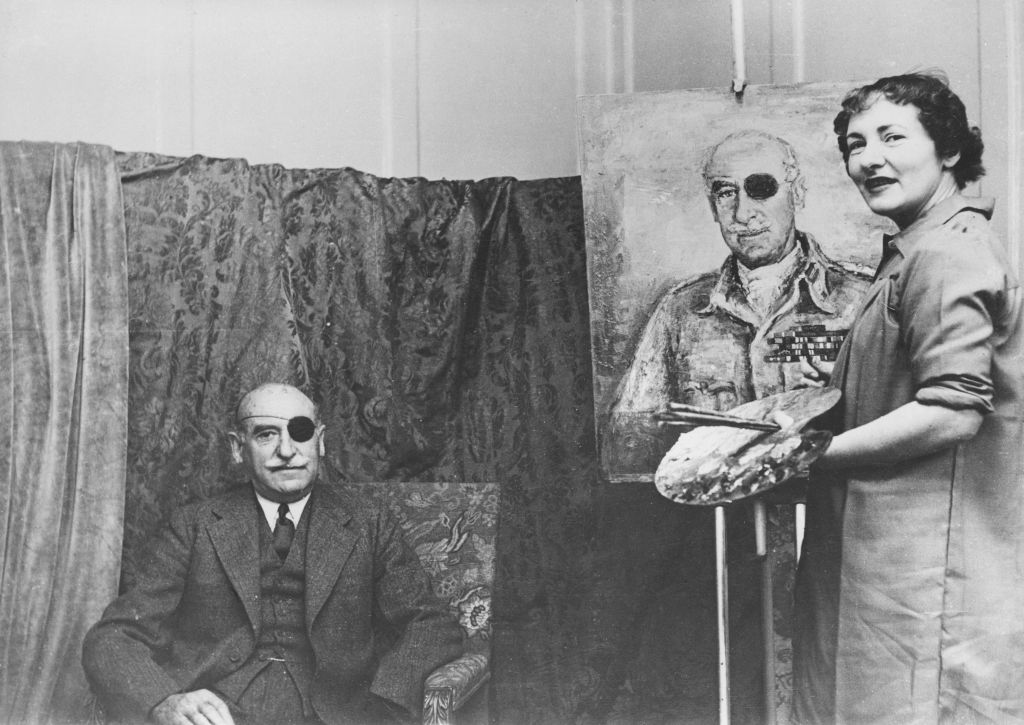Britain’s Indestructible Soldier
Adrian Carton de Wiart was the one-eyed, one-handed British Army officer whose battlefield heroics defied belief—and the odds.

1. He Was Indestructible
Adrian Carton de Wiart earned the moniker “the unkillable soldier”. And, given his record, it’s easy to see why. Carton de Wiart survived shots to the face, head, stomach, ankle, leg, hip and ear. Not to mention, a couple of plane crashes, a harrowing escape from a POW camp and a self-inflicted amputation (sans anesthesia). And that’s just the short version.
 Henry Walter Barnett, Wikimedia Commons
Henry Walter Barnett, Wikimedia Commons
2. He Might Have Been A Prince
Born in Brussels on May 5, 1880, Adrian Carton de Wiart was the eldest son of Léon Constant Ghislain Carton de Wiart, a prominent lawyer and magistrate, and Ernestine Wenzig. Or was he? Even before he was born, there was speculation that Carton de Wiart was, in fact, the illegitimate child of King Leopold II of the Belgians.
That might help explain what happened next.
 Major Gerald Lamont, Wikimedia Commons
Major Gerald Lamont, Wikimedia Commons
3. His Mother Abandoned Him
Carton de Wiart’s mother curiously fell out of the picture in 1886. Historians originally speculated that she had passed away, but later discovered that his parents had gotten a rather sudden divorce. Shortly thereafter, Carton de Wiart moved to Cairo, Egypt with his father where he learned to speak Arabic.
As it turns out, he had big ideas for Carton de Wiart’s future—but they didn’t quite turn out as planned.
 Oulds D C (Lt), Royal Navy, Wikimedia Commons
Oulds D C (Lt), Royal Navy, Wikimedia Commons
4. He Was Going To Be A Lawyer
Carton de Wiart’s father remarried to an Englishwoman who insisted that the little boy receive a proper British education. Without a second thought, she shipped him off to boarding school in England. Eventually, Carton de Wiart found himself at Balliol College, Oxford, following in his father’s footsteps and preparing for a career in law.
But adventure was calling his name.
 H. Walter Barnett, Wikimedia Commons
H. Walter Barnett, Wikimedia Commons
5. He Was Eager For A Fight
Just as Adrian Carton de Wiart was failing at his preliminary law exams and giving up hope of following in his father’s footsteps, fate intervened. The Second Boer Conflict was just getting underway and the British Army needed boots on the ground. As Carton de Wiart put it, “At that moment, I knew that [combat] was in my blood”.
There was just one problem.
 Cecil Beaton, Wikimedia Commons
Cecil Beaton, Wikimedia Commons
6. He Faked It To Make It
Eager as he was to jump into the fray, Adrian Carton de Wiart was not, in fact, a British citizen and therefore could not enlist. Additionally, he was too young to join the army without his father’s consent. That’s when he came up with a devious idea. Carton de Wiart pretended to be 25 and signed up under the pseudonym, “Trooper Carton”.
His first taste of conflict was nearly his last.
 William Orpen, Wikimedia Commons
William Orpen, Wikimedia Commons
7. He Got What He Was Asking For—Twice
Mere months into the fighting, Carton de Wiart got exactly what he wished for—and then some. During the early stages of the Second Boer Conflict, he sustained shots to the stomach and groin. Miraculously, he survived these early wounds. But, much to his chagrin and dismay, the Army sent him home to recover.
Ironically, an even worse fight awaited him there.
 Muzhait, CC BY-SA 4.0, Wikimedia Commons
Muzhait, CC BY-SA 4.0, Wikimedia Commons
8. He Made His Father Furious
As soon as he returned home, even before his wounds had scabbed over, Adrian Carton de Wiart found himself in another fight. Once his father learned that he had abandoned his studies and enlisted in the British Army under false pretense, he was livid.
Despite his better judgment, however, he allowed Carton de Wiart to remain with the Army.
 Bibliothèque nationale de France, CC0, Wikimedia Commons
Bibliothèque nationale de France, CC0, Wikimedia Commons

History's most fascinating stories and darkest secrets, delivered to your inbox daily.
9. He Was Fit As A Fiddle
Shockingly, Carton de Wiart's grievous injuries in his first conflict didn’t slow him down at all. In fact, they only seemed to make him stronger. Carton de Wiart developed a fanatical obsession with physical fitness, running, jogging, walking and playing sports on a regular basis. That’s not, however, to say that he was a very good sportsman.
10. He Had A Potty Mouth
In her published diaries, Hermione Knox, Countess of Ranfurly, revealed a secret or two about Carton de Wiart. She claimed that he was “a delightful character” in male company and asserted that he “must hold the world record for bad language”. Despite his potty mouth and preference for male company, however, he was still a gentleman.
11. He Had Some Happy “Heydays”
Adrian Carton de Wiart is famous as an invincible fighter on the battlefield. But he also had a softer side. In 1908, he married the love of his life, Countess Friederike Maria Karoline Henriette Rosa Sabina Franziska Fugger von Babenhausen—say that five times fast.
Carton de Wiart de Wiart described those years as his “Heyday”. Then 1914 happened.
 Unknown Author, Wikimedia Commons
Unknown Author, Wikimedia Commons
12. He Fought The “Mad Mullah”
Carton de Wiart’s quiet married life got upended with the outbreak of WWI in November 1914. Despite already being a decorated veteran of the Second Boer Conflict, Carton de Wiart became a naturalized British subject and returned to duty. He served in the Somaliland Camel Corps in British Somaliland where he fought against the “Mad Mullah”.
He had a shockingly heroic return to service.
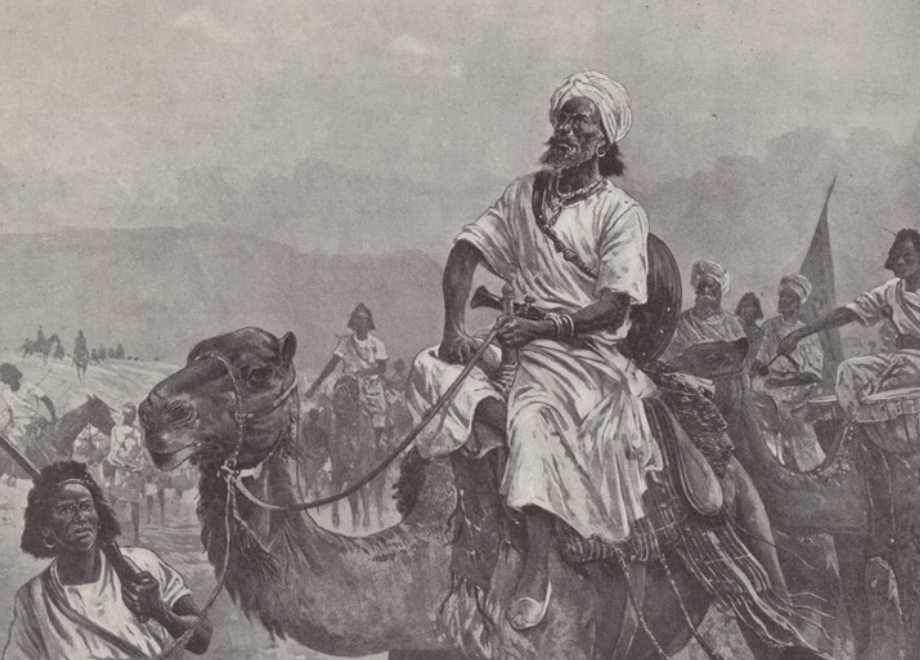 The Sphere, CC0, Wikimedia Commons
The Sphere, CC0, Wikimedia Commons
13. He Got Shot—And Kept Going
During an attack on an enemy fort at Shimber Berris in Somaliland, Adrian Carton de Wiart added yet another chapter to his storied career. At the onset of the attack, he took a shot to his ear and face. Somehow, that only seemed to encourage him to push the attack further. He quickly stitched himself and rejoined the fighting.
But what happened next nearly had him going home in a body bag.
14. He Didn’t Miss A Beat Or A Shot
After rejoining the fracas at Shimber Berris, Carton de Wiart quickly found himself in trouble again. This time, a shot ricocheted and hit his left eye. Decades later, in 1962, Lord Ismay recounted Carton de Wiart’s heroics on that day. “He didn't check his stride but I think the [shot] stung him up as his language was awful”.
But, it almost sounded like Carton de Wiart was enjoying it.
 The U.S. National Archives, Picryl
The U.S. National Archives, Picryl
15. He Was In “Bad Shape”
According to Lord Ismay, Carton de Wiart’s latest injury left him in “bad shape”. “The doctor could do nothing for his eye,” Lord Ismay said, “but we had to keep him with us. He must have been in agony”. Somehow, Carton de Wiart managed to finish the battle with his wounds.
He might actually have been ecstatic about getting shot—three times.
16. He Considered His Injuries “Blessings”
For most service members, one shot would be enough to send them happily home. But, according to Lord Ismay, Adrian Carton de Wiart considered his multiple wounds to be a “blessing”. Lord Ismay recounted that Carton de Wiart was practically overjoyed about his grievous wounds as they “allowed him to get out of Somaliland to Europe where he thought the real action was”.
In all fairness, he did get a hero’s welcome back in England.
 No 9 Army Film & Photographic Unit, Wikimedia Commons
No 9 Army Film & Photographic Unit, Wikimedia Commons
17. He Had His Own Suite At The Hospital
Adrian Carton de Wiart returned to a nursing home in England to recover from his injuries. Funny enough, throughout his blood and adventure-filled career, Carton de Wiart returned to the Park Lane nursing home so often that they kept his pajamas ready for his next visit. But, he had a bizarre way of refusing medical attention—even when he needed it.
18. He Threw Out His Eye
The shot to Carton de Wiart’s face did, eventually, cost him his left eye. In an effort to maintain his dashing good looks, however, the doctors gave him a glass replacement. His reaction was unforgettable. Legend has it that the glass eye caused Carton de Wiart so much discomfort that he chucked it out of a taxi.
He then donned his signature black eyepatch and prepared himself for yet another fight.
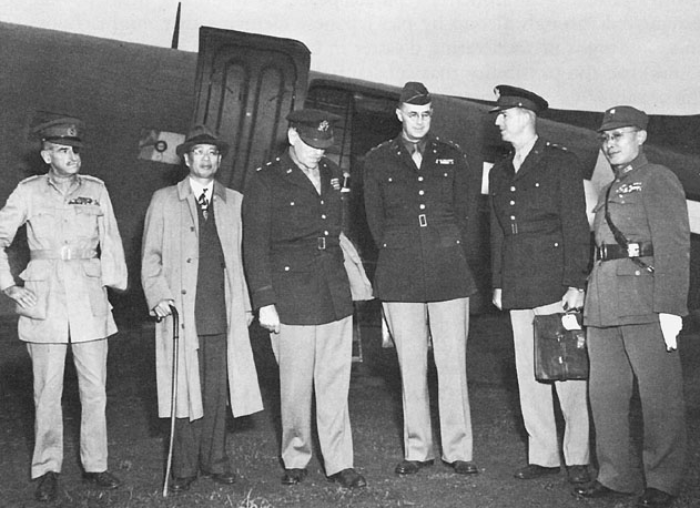 Unknown author, Wikimedia Commons
Unknown author, Wikimedia Commons
19. He Still Wanted More
Against the odds, Adrian Carton de Wiart managed to make a full recovery from the injuries he sustained in Somaliland—minus one eye, of course. Nevertheless, he still had to fight his way past the medical board to get clearance to return to battle. A little bemused—and definitely impressed—the medical board agreed that Carton de Wiart was fit for service.
In other words, he hadn’t lost enough limbs quite yet.
 Nationaal Archief, Wikimedia Commons
Nationaal Archief, Wikimedia Commons
20. He Joined The Real Fighting
Fully recovered from his injuries, Carton de Wiart got exactly what he wanted. In May of 1915, he traveled to Ypres to fight on the bloody and brutal frontlines of the Western Front. He wasn’t there for long before the Second Battle of Ypres broke out, with the German forces launching an artillery barrage down on his head.
Naturally, he just had to survive yet another grievous wound.
21. His Hand Was “Shattered”
The artillery barrage from the German forces was relentless and inescapable. Of course, Adrian Carton de Wiart being the magnet for ordinance that he was, attracted a nearby shell. The blast was so powerful that it “shattered” his left hand. While he (miraculously) survived the injury, what he did next would have anyone else begging to be put out of their misery.
 Bundesarchiv, Bild 183-2004-0430-501, CC BY-SA 3.0, Wikimedia Commons
Bundesarchiv, Bild 183-2004-0430-501, CC BY-SA 3.0, Wikimedia Commons
22. He Tore Off His Own Fingers
When Adrian Carton de Wiart reported to the medical tent for treatment, the doctor refused to amputate his fingers. It’s not entirely clear why, but it makes what happened next even more unbelievable. In his autobiography, Happy Odyssey, Carton de Wiart recounted tearing off two of his mangled fingers after the doctor turned him away.
He clearly did not do a good job of self-amputating.
 Municipal Archives of Trondheim, Flickr
Municipal Archives of Trondheim, Flickr
23. He Lost His Left Hand
Carton de Wiart’s improvised battlefield amputation left his already “shattered” hand totally mangled. Much like his eye had been beyond repair, so too was his left hand. Later that year, he had no choice but to have the hand amputated. Thankfully, this time, a surgeon performed the operation with all of the right tools—and anesthesia.
But Carton de Wiart hadn’t learned his lesson.
24. He Was Still Fit For Fighting
Despite—or, more likely, because of—everything that he had been through, Adrian Carton de Wiart was more eager than ever to get back into battle. After recovering from his latest round of injuries, he once again managed to convince a medical board that, even without a left eye and left hand, he was fit for service. In fact, his heroics had only just begun.
25. He Finally Got “Somme”
In 1916, the British Army gave Carton de Wiart command of the 8th Battalion, Gloucestershire Regiment. With this one good eye and one good hand, he commanded the famed battalion during the fierce fighting at the Battle of the Somme. He had no way of knowing that he was just about to cement his status as a battlefield legend.
 Flickr, Cassowary Colorizations
Flickr, Cassowary Colorizations
26. He Led The Charge
According to battle reports, the fighting “swayed back and forth”. It was so intense that three other commanding officers fell in the line of duty, leaving no one but the battle-hardened Carton de Wiart to take full charge. With his one good eye and one good hand, he led his men in holding off enemy counterattacks. But it cost him dearly.
27. He Took A Slug To The Head
Mr A. Holmes, Carton de Wiart's personal servant (AKA “batman”), gave a harrowing account of his commanding officer’s heroics on frontlines. In a 1964 interview with the BBC, he said, “They shifted us from Ypres then back on the Somme again to the Devil's Wood, and that's where the old man got shot through the back of the head”.
 Archives New Zealand from New Zealand, CC BY-SA 2.0, Wikimedia Commons
Archives New Zealand from New Zealand, CC BY-SA 2.0, Wikimedia Commons
28. He Was Lucky
Once again, Carton de Wiart defied the odds. Despite taking yet another shot to the head, he was still standing. Thankfully, the shot hadn’t been fatal because, as Holmes recounted, it “missed his spinal cord”. Stubborn as always, Carton de Wiart recovered from his latest injuries to fight another day—and survive another shot. Or two. Or…
29. He Survived More Shots
Once he rejoined the fighting, Carton de Wiart kept up his tradition of surviving the unsurvivable. At the Battle of Passchendaele, he took a slug in the hip. Then, at Cambrai, he took one in leg and another through his ear at Arras. But nothing compared to the piece of metal that he received once he finally returned home.
30. He Didn’t Like Taking Credit
For his brave actions at La Boiselle, Adrian Carton de Wiart earned the Victoria Cross, the highest British award for gallantry. However, in his autobiography, he declined to even mention the medal. His reason why was heartbreaking. He later explained to a friend that “it had been won by the 8th Glosters, for every man has done as much as I have”. But not every man commanded the same respect.
 Arghya1999, CC BY-SA 3.0, Wikimedia Commons
Arghya1999, CC BY-SA 3.0, Wikimedia Commons
31. He Was A “Fire Eater”
Just three days before the end of WW1, Adrian Carton de Wiart took command of a brigade with the rank of temporary brigadier general. Serviceman and memoirist AS Bullock provided a first-hand description of Carton de Wiart’s arrival. “Cold shivers went down the back of everyone in the brigade,” he said, “for he had an unsurpassed record as a fire eater”.
It’s safe to say that he struck fear even into his own men.
 Library of Congress, Wikimedia Commons
Library of Congress, Wikimedia Commons
32. He Threw His Men Into Battle
According to Bullock, the brigade was in rough shape when Carton de Wiart showed up “on a lively cob with his cap tilted at a rakish angle”. They all knew his reputation for “throwing the men under his command into whatever fighting happened to be going”. But, with the end drawing near, they hoped that they might escape his passion for battle.
33. He Didn’t Miss A Thing
Nothing ever escaped Carton de Wiart’s watchful, one-eyed gaze. Having only just arrived, the new brigadier general ordered his men to line up for inspection. Without missing a beat, he barked at Bullock, first in line, to get his bootlace changed. Fortunately for the weary brigade, however, the fighting ended before Carton de Wiart could lead them into battle.
But the fighting was never over for Carton de Wiart.
 UK Government artistic works, Picryl
UK Government artistic works, Picryl
34. His Fight Never Ended
At the end of WWI, Carton de Wiart went off to Poland as second in command of the British-Poland Military Mission. Though the fighting in Eastern Europe wasn’t quite as dramatic as it had been during WWI, Carton de Wiart still managed to find more than a few exciting incidents to add to his already legendary career and reputation.
 National Digital Archives, Wikimedia Commons
National Digital Archives, Wikimedia Commons
35. His Plane Crashed Over Enemy Territory
Carton de Wiart’s mission in Poland was largely a diplomatic one. But he still found occasion for action. Sometime around 1920, he was traveling on a plane above Lithuanian airspace when, for reasons that we don’t know, his aircraft went down. Somehow, Carton de Wiart survived the ordeal only to find himself taken captive by Lithuanian forces.
36. He Wasn’t In The Clear Yet
Carton de Wiart went straight from the frying pan into the oven. Even after he managed to secure his release from the Lithuanian forces, he found himself surrounded by the enemy. While out on his observation train—alone, we might add—a group of Soviet cavalry descended on his position.
What ensued was a scene straight out of a Hollywood movie.
 Press Agency photographer, Wikimedia Commons
Press Agency photographer, Wikimedia Commons
37. He Fended Off A Cavalry Charge—Alone
Even with an amputated left hand and a missing eye, Adrian Carton de Wiart was still one of the fiercest fighters in any fracas. Armed with nothing but his revolver, Carton de Wiart stood on the footplate of his train and fended off the Soviet cavalry. But it was a close call.
At one point, he fell from the footplate and out of cover but managed to re-board before taking yet another slug to the face.
38. He Finally Surrendered
Finally, in 1923, Carton de Wiart did the unthinkable—he surrendered. No, not to enemy forces but to time. Scarred and maimed, Carton de Wiart spent the next 15 years on the Polish estate Prostyń, which was the size of Ireland. In this memoirs, he recalled that time fondly, writing, “In my fifteen years in the marshes I did not waste one day without hunting”.
But the biggest fight of his life was just around the corner.
 Centralne Archiwum Wojskowe, Picryl
Centralne Archiwum Wojskowe, Picryl
39. He Lost Everything To The Soviets
Eventually, Soviet forces overran Carton de Wiart’s beloved Prostyń. He had left in such a hurry that he had to leave behind his most beloved possessions; his fishing rods, clothing, and furniture. Carton de Wiart sadly never returned to Prostyń and never retrieved his belongings but, he said, “they did not manage to take my memories”.
But they would take one more pound of flesh.
 Unknown Author, Wikimedia Commons
Unknown Author, Wikimedia Commons
40. He Narrowly Escaped The Luftwaffe
At the outbreak of WWII, Carton de Wiart assessed the Polish situation as desperate. He immediately ordered the evacuation of the British Mission but only narrowly managed to escape. As his convoy was careening through the streets to safety, the Luftwaffe were in hot pursuit overhead.
While some in his convoy perished, Carton de Wiart survived to fight yet another day.
 Nationaal Archief, CC0, Wikimedia Commons
Nationaal Archief, CC0, Wikimedia Commons
41. He Celebrated His 60th In Style
Sensing the threat of the Third Reich, Carton de Wiart left retirement and returned to service. His first mission took him to Trondheim, Norway where an ill-fated campaign saw him stranded and under attack on all sides by ski troops, machine fire, air raids and navy troops. Carton de Wiart held off the attackers and returned to England on his 60th birthday.
His WWII adventures promised to be even more dramatic than his WWI adventures.
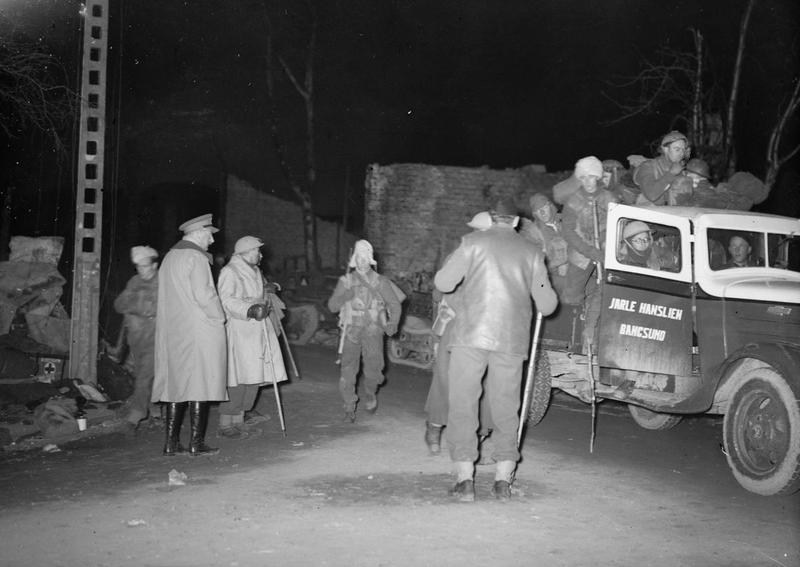 Imperial War Museums, Wikimedia Commons
Imperial War Museums, Wikimedia Commons
42. His Plane Crash Was Only the Beginning
In April 1941, Adrian Carton de Wiart became head of the British-Yugoslavian Mission and traveled to Cairo to begin negotiations. As per usual, however, he had to add some drama to his martial adventures. While en route, his plane crashed into the sea off the coast of Italian-controlled Libya and he lost consciousness upon impact.
He was heading towards a watery grave when the unbelievable happened.
 Australian government, Wikimedia Commons
Australian government, Wikimedia Commons
43. He Had A Rude Awakening
Fortunately for Carton de Wiart, the waters off the Libyan coast happened to be frigid. The cold temperatures jolted him awake before the waves could claim his life. Now into his 60s and with more injuries than any other active serviceman, Carton de Wiart managed to swim ashore with his crew—only to wind up in the hands of the enemy Italian authorities.
The story of his legendary resilience was about to add yet another nail-biting chapter.
 Unknown photographer, Wikimedia Commons
Unknown photographer, Wikimedia Commons
44. He Couldn't Stay Captive for Long
Even being an Italian POW wasn’t enough to dampen Carton de Wiart's spirit. He tried to escape his captors numerous times, with one particularly bold attempt involving him disguising himself as an Italian peasant. Despite his lack of Italian (and easily identifiable injuries) he managed to evade detection for eight whole days.
Though the Italians eventually captured him, what happened next changed the course of history.
 Narodowe Archiwum Cyfrowe Poland, Picryl
Narodowe Archiwum Cyfrowe Poland, Picryl
45. He Became an Unexpected Envoy
In a surprising turn of events, the Italians took Carton de Wiart from captivity in August of 1943 and drove him to Rome. The Italian government, secretly planning to exit the WWII, chose Carton de Wiart to deliver the message of a proposed peace treaty to the British Army. His extraordinary journey continued to unfold in unexpected ways.
46. He Was A Fashionista
Carton de Wiart's role in the secret negotiations involved traveling to Lisbon to meet Allied contacts. Wanting to maintain appearances, his captors instructed him to wear civilian clothes. However, the Belgian-born British aristocrat was distrusting of Italian tailors and quipped, "I had no objection, provided I did not resemble a gigolo”.
In the end, he was happy with the suit he got, calling it “as good as anything that ever came out of Savile Row”. But he wasn’t always a tactful negotiator.
47. He Clashed With Mao
As might already be obvious from his battlefield record, Adrian Carton de Wiart was never one to shy away from confrontation. While serving in China as Winston Churchill’s personal representative, however, he might have gone too far. Carton de Wiart denounced Mao Zedong as “a fanatic”. But what he did next was far from diplomatic.
 The People's Republic of China Printing Office, Wikimedia Commons
The People's Republic of China Printing Office, Wikimedia Commons
48. He Left A Dangerous Dictator Stunned
Adrian Carton de Wiart met Mao Zedong at dinner, leading to a memorable exchange. The grizzled (if crippled) veteran interrupted Mao’s propaganda speech, criticizing him for not fighting the Japanese for domestic political reasons. Briefly stunned, Mao then laughed it off.
However, it’s possible that the Chinese Communist dictator didn’t actually find it funny at all.
49. His Plane (Mysteriously) Crashed
The details of Carton de Wiart’s last days in China are a little scarce. But one chilling detail has emerged. After his brush with the infamously evil Mao Zedong, Carton de Wiart was on yet another plane that, curiously, fell out of the sky. Once again, however, Carton de Wiart walked away from the wreckage like the indestructible trooper he was.
But, maybe, he had tempted fate one too many times.
50. He Finally Hung Up His Hat
In a move that left many people stunned, Adrian Carton de Wiart officially retired from service in October 1947—even as there was still fighting going on. It’s likely that his lack of diplomatic tact made it difficult for the British Army to find a suitable position for him. Despite this, his legacy as a fearless and straightforward soldier was firmly cemented.
He just wasn’t a match for the stairs.
 Royal collection of the United Kingdom, Picryl
Royal collection of the United Kingdom, Picryl
51. He Was No Match For The Stairs
On his way home via French Indochina, Carton de Wiart stopped in Rangoon as a guest of the army commander. While descending a flight of stairs, he slipped on coconut matting, fell, broke several vertebrae, and knocked himself out cold. But he hadn’t survived three of the bloodiest conflicts to succumb to some stairs. He recuperated in Rangoon before returning home.
But there was still one tragedy ahead for him.
52. He Lived Happily Ever After
Carton de Wiart’s wife of 41 years passed away in 1949. But a well-decorated, one-eyed, one-handed senior veteran like him didn’t have to be single for long. In 1951, he married Ruth Myrtle Muriel Joan McKechnie, a divorcee 23 years his junior who, nonetheless, brought new joy into his life. They settled in Aghinagh House in Ireland, marking a tranquil period for the man who had always craved action and adventure.
53. He Just Liked Battle
After a life full of near misses, the Grim Reaper finally caught up with Adrian Carton de Wiart. He passed away at the age of 83 on 5 June 1963, exactly one month after his birthday. Despite all of the injuries, crashes and amputations that he had endured, Carton de Wiart had no regrets. “Frankly,” he famously wrote, “I enjoyed the [fight]”.
 Paputman, CC BY-SA 3.0, Wikimedia Commons
Paputman, CC BY-SA 3.0, Wikimedia Commons

